See also
- Marjorie Fleming (1803–1811), Scottish child writer and poet
- Peggy Fleming (born 1948), American figure skater
Margaret Fleming may refer to:
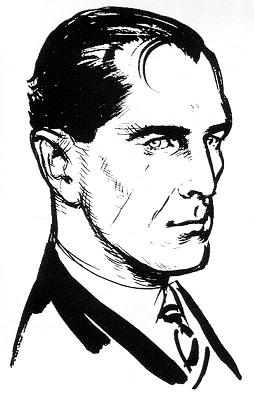
The James Bond series focuses on the titular character, a fictional British Secret Service agent created in 1953 by writer Ian Fleming, who featured him in twelve novels and two short-story collections. Since Fleming's death in 1964, eight other authors have written authorised Bond novels or novelisations: Kingsley Amis, Christopher Wood, John Gardner, Raymond Benson, Sebastian Faulks, Jeffery Deaver, William Boyd, and Anthony Horowitz. The latest novel is With a Mind to Kill by Anthony Horowitz, published in May 2022. Additionally Charlie Higson wrote a series on a young James Bond, and Kate Westbrook wrote three novels based on the diaries of a recurring series character, Moneypenny.
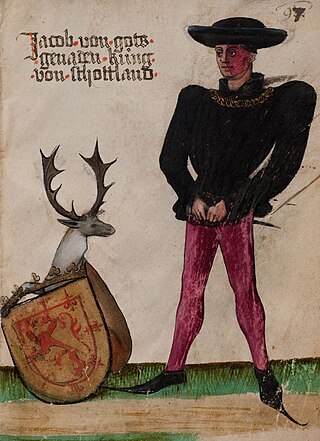
James II was King of Scots from 1437 until his death in 1460. The eldest surviving son of James I of Scotland, he succeeded to the Scottish throne at the age of six, following the assassination of his father. The first Scottish monarch not to be crowned at Scone, James II's coronation took place at Holyrood Abbey in March 1437. After a reign characterised by struggles to maintain control of his kingdom, he was killed by an exploding cannon at Roxburgh Castle in 1460.

Robert Stewart, Duke of Albany was a member of the Scottish royal family who served as regent to three Scottish monarchs. A ruthless politician, Albany was widely regarded as having murdered his nephew, the Duke of Rothesay, and brother to the future King James I of Scotland. James was held in captivity in England for eighteen years, during which time Albany served as regent in Scotland, king in all but name. He died in 1420 and was succeeded by his son, Murdoch Stewart, Duke of Albany, who was executed for treason when James returned to Scotland in 1425, almost causing the complete ruin of the Albany Stewarts.
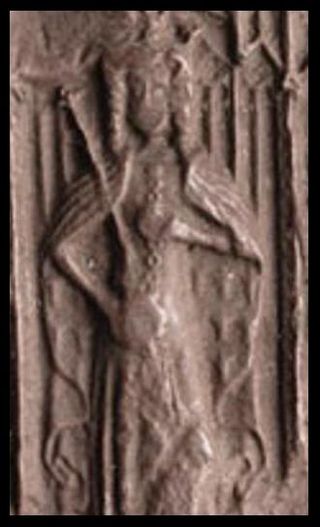
Murdoch Stewart, Duke of Albany was a leading Scottish nobleman, the son of Robert Stewart, Duke of Albany, and the grandson of King Robert II of Scotland, who founded the Stewart dynasty. In 1389, he became Justiciar North of the Forth. In 1402, he was captured at the Battle of Homildon Hill and would spend 12 years in captivity in England.

Aberlour is a village in Moray, Scotland, 12 miles (20 km) south of Elgin on the road to Grantown. The Lour burn is a tributary of the River Spey, and it and the surrounding parish are both named Aberlour, but the name is more commonly used in reference to the village which straddles the stream and flanks the Spey – although the full name of the village is Charlestown of Aberlour.

James Hamilton, 1st Duke of Châtellerault, 2nd Earl of Arran, was a Scottish nobleman and head of the House of Hamilton. A great-grandson of King James II of Scotland, he was heir presumptive to the Scottish throne. Arran was Regent of Scotland during the minority of Mary, Queen of Scots from 1543 to 1554, when he lost the regency to Mary of Guise. At first pro-English and Protestant, he converted to Catholicism in 1543 and supported a pro-French policy. He reluctantly agreed to Mary's marriage to Francis, eldest son of King Henry II of France, and was rewarded by Henry by being made Duke of Châtellerault in 1549. During the Scottish Reformation, Châtellerault joined the Protestant Lords of the Congregation to oppose the regency of Mary of Guise, and lost his French dukedom as a result.

Dumbarton Castle has the longest recorded history of any stronghold in Scotland. It sits on a volcanic plug of basalt known as Dumbarton Rock which is 240 feet (73 m) high and overlooks the Scottish town of Dumbarton.

Andrew Forman was a Scottish diplomat and prelate who became Bishop of Moray in 1501, Archbishop of Bourges in France, in 1513, Archbishop of St Andrews in 1514 as well as being Commendator of several monasteries.
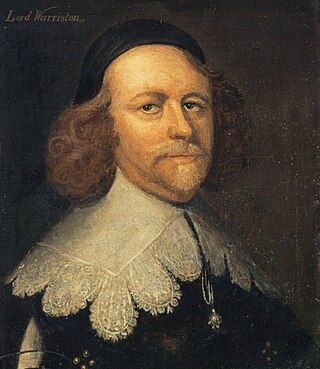
Archibald Johnston, Lord Wariston was a Scottish judge and statesman.
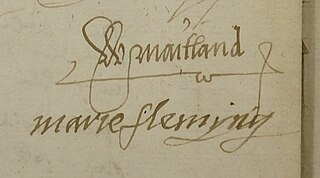
Mary Fleming was a Scottish noblewoman and childhood companion and cousin of Mary, Queen of Scots. She and three other ladies-in-waiting were collectively known as "The Four Marys". A granddaughter of James IV of Scotland, she married the queen's renowned secretary, Sir William Maitland of Lethington.

Janet Stewart, Lady Fleming, called la Belle Écossaise, was a Scottish courtier. She was an illegitimate daughter of King James IV of Scotland who served as governess to her half-niece Mary, Queen of Scots. Janet was briefly a mistress of King Henry II of France, by whom she had a legitimated son: Henri d'Angoulême. Her daughter, Mary Fleming, was one of the young queen's "Four Marys".
Margaret of Scotland may refer to:
Robert Douglas (1594–1674) was the only minister of the Church of Scotland to be Moderator of the General Assembly five times.
Malcolm Fleming, 3rd Lord Fleming, was Lord Chamberlain of Scotland to King James V, from 1524.
James, Jim, or Jimmy Fleming may refer to:
William Graham, 3rd Earl of Menteith was a Scottish magnate and third Earl of Menteith.
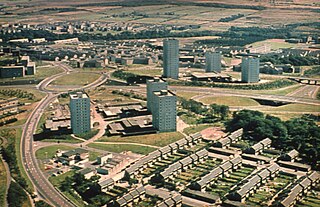
Cumbernauld is a large town in the historic county of Dunbartonshire and council area of North Lanarkshire, Scotland. It is the tenth most-populous locality in Scotland and the most populated town in North Lanarkshire, positioned in the centre of Scotland's Central Belt. Geographically, Cumbernauld sits between east and west, being on the Scottish watershed between the Forth and the Clyde; however, it is culturally more weighted towards Glasgow and the New Town's planners aimed to fill 80% of its houses from Scotland's largest city to reduce housing pressure there.
John Fleming, 5th Lord Fleming, was a Scottish nobleman and a supporter of Mary, Queen of Scots.
The Gateway Theatre was a Category C listed building in Edinburgh, Scotland, situated on Elm Row at the top of Leith Walk.
Margaret Fleming, Countess of Atholl (1536-1586) was a Scottish courtier and landowner rumoured to be involved in the occult. She served as lady-in-waiting to Mary, Queen of Scots.